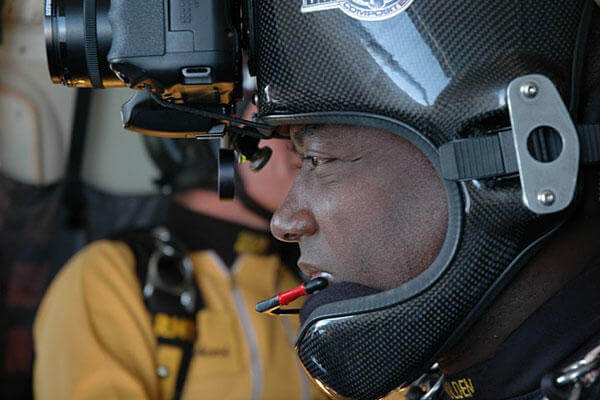You take pictures when you want to hold onto a moment. The first day of school. That silly icing on someone's nose. The sweet face of your newborn baby.
But you take video when you want to capture time itself. This is Grandma dancing the Harlem Shake. Here is your first lay up. This is what you look like scrambling away from the Taliban and getting your weapon shot out of your hands.
That last kind of "time capture" is causing a bit of a ruckus in our military community. Ever since Pfc. Ted Daniels’ helmet cam video of himself in combat in Afghanistan got 23 million views online, plenty of questions have been raised about the use of video that troops are bringing home from war. Who benefits from these videos? How should they be used? Is it OK to make a profit from them?
There are so many kinds of war video out there, it is difficult to make hard and fast rules.
The war itself is captured officially on video cameras mounted on helicopters, on drones, on trucks. Troops are buying their own helmet cams to capture what happens to them on patrol.
Deployed servicemembers also make and share videos that have nothing to do with war -- stories they read to their kids for United Through Reading, songs they croon to their Milsos, recorded toasts to be shown at their sister’s wedding, and our favorite military versions of music videos.
At Military.com, our own members’ favorite videos are of homecomings, military humor, or just plain Things That Go Boom. They also upload video of their own deployment experience almost as a yearbook of their time in the service.
Pretty much, I am for all those videos. They seem to be doing a kind of work for the military members themselves. Just last month, I attended training at the University of Maryland for mental health professionals who would be working with military-affiliated students. As part of the training, the organizers showed video of the “non-defensive driving” used in Iraq and Afghanistan taken from a vehicle-mounted camera.
Suddenly, the sleepy audience was wide awake. The noise. The yelling. The crowds. The things that burned in the street. The cars that would scramble to get out of the way only after their bumper had been tapped by the military vehicle. Hard.
After several minutes of that, the audience was tense and anxious and richly aware why their returning military students might have a little trouble getting used to campus life. That is video that works for the servicemember.
Yet our use of combat video is not always pure. It is often entertainment for people who will never serve a day in their lives. It is Call of Duty without the controller.
And maybe it is even worse than that. In his Washington Post story on helmet cams, Greg Jaffe described how Pfc. Daniels’ video was used by Funker530, the proprietor of a YouTube channel featuring combat footage from Afghanistan. When Daniels was told by his superiors to get the video taken down, Funker530 refused the request.
Then a rapper used the footage in a video to show Daniels as a pathetic pawn of the government. Viewers harshly critiqued Daniels’ performance under fire until Daniels was questioning his own response to the event.
That doesn’t seem right at all. That makes me want to shut down every video camera in theater. This is not Tom Hanks or Charlie Sheen. This is not fun. This is real. This is all too real.
I understand we are creatures who depend on our sight to know things. So of course we want to know what war is like. If these videos help troops by helping the civilian population think very carefully about engaging in future wars, then we should run them and run them and run them.
But if all we plan to do is move from sharing to gawking to outright armchair quarterbacking, I wonder if the rest of the world really needs to see these videos at all. Like Jack Nicholson’s character in A Few Good Men, I wonder if non-military types can handle the truth -- or should.
How does this benefit the soldier who took the video?
Keep Up with the Ins and Outs of Military Life
For the latest military news and tips on military family benefits and more, subscribe to Military.com and have the information you need delivered directly to your inbox.






















